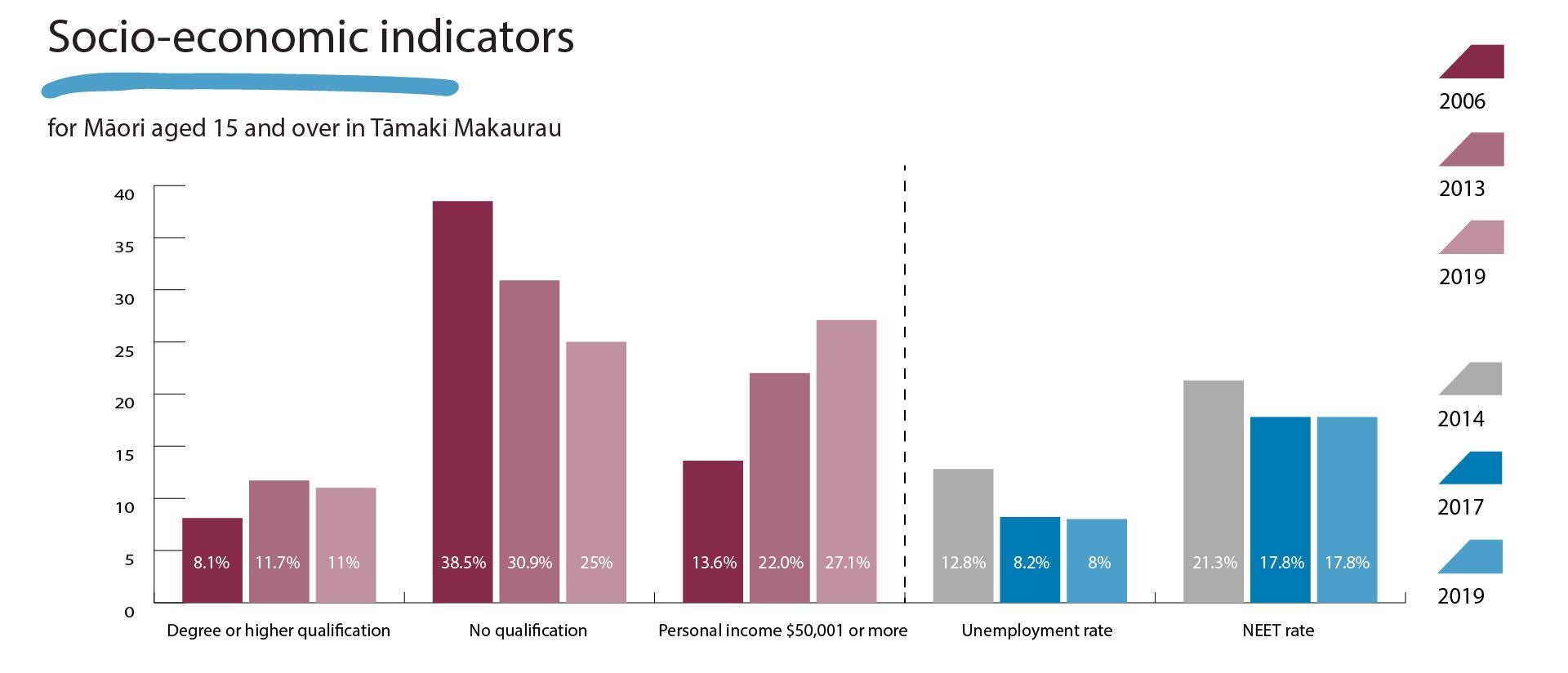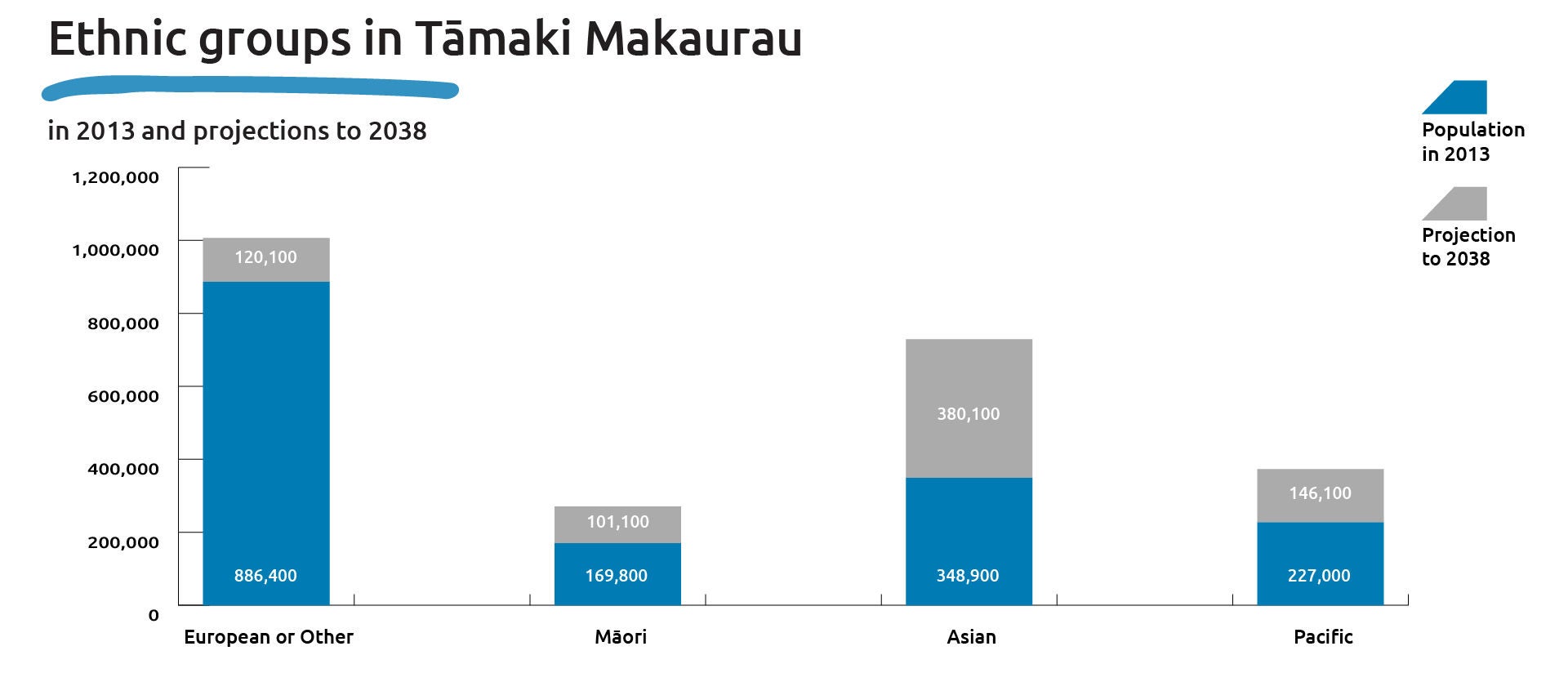Some council services will be unavailable over the Christmas and New Year break.
Check if you need to apply or order before Friday 19 December 2025.
Māori Indigenous people of Aotearoa New Zealand. Māori incorporates mana whenua and mataawaka. living in Tāmaki Makaurau The Māori name for Auckland. Translates to Tāmaki desired by many. are mana whenua Hapū and iwi with ancestral relationships to certain areas in Tāmaki Makaurau where they exercise customary authority. or mataawaka Māori who live in Auckland and are not in a mana whenua group..
Mana whenua are represented by the 19 iwi (tribes) or hapū (sub-tribes) with territorial affiliations to the Tāmaki Makaurau area that are recognised by Auckland Council.
These groups have specific rights and responsibilities in relation to natural resources within Tāmaki Makaurau.
In addition there are Māori from other tribes and their descendants who migrated to Tāmaki Makaurau from other parts of the country, and Māori who have no connection to their hapū and iwi referred to as mataawaka.
The migration of Māori populations to urban centres increased after World War II because government policies encouraged Māori to join the urban labour force to contribute to industry (Ryks, Pearson & Waa, 2016).
More Māori live in Tāmaki Makaurau than in any other region in Aotearoa.
At the 2013 Census:
At the 2018 census [note 1, note 2]:
| Tāmaki Makaurau iwi | Tāmaki Makaurau | Aotearoa | Tāmaki Makaurau as percentage of total Aotearoa (%) |
|---|---|---|---|
| Ngāti Maru (Marutūahu) | 1227 | 3768 | 32.6 |
| Ngāti Paoa | 1440 | 3456 | 41.7 |
| Ngāi Tai (Hauraki) | 312 | 498 | 62.7 |
| Ngāti Tamaterā | 618 | 2577 | 24.0 |
| Ngāti Wai | 1902 | 5667 | 33.6 |
| Ngāti Whanaunga | 294 | 624 | 47.1 |
| Ngāti Whātua | 7353 | 14,784 | 49.7 |
| Patukirikiri | 9 | 45 | 20.0 |
| Te Kawerau | 93 | 150 | 62.0 |
| Te Uri-o-Hau | 462 | 1257 | 36.8 |
| Waikato | 13,011 | 40,083 | 32.5 |
| Tāmaki Makaurau (top ten other iwi affiliations) [note 2] | Tāmaki Makaurau | Aotaroa | Tāmaki Makaurau as percentage of total Aotearoa (%) |
| Ngāpuhi | 50,577 | 125,601 | 40.3 |
| Ngāti Kahungunu [note 3] | 7812 | 61,629 | 12.7 |
| Ngāti Maniapoto | 8346 | 35,358 | 23.6 |
| Ngāti Porou | 13,161 | 71,049 | 18.5 |
| Ngāi Tahu / Kāi Tahu | 6600 | 54,819 | 12.0 |
| Ngāti Tūwharetoa | 5991 | 35,874 | 16.7 |
| Te Arawa [note 4] | 8739 | 43,374 | 20.1 |
| Te Hiku [note 5] | 6336 | 14,562 | 43.5 |
| Te Rarawa | 7224 | 16,512 | 43.8 |
| Tūhoe | 6231 | 34,887 | 17.9 |
| Don't know | 29,226 | 110,928 | 26.3 |
| Total people | 163,920 | 668,724 | 24.5 |
Notes
1. Māori are counted in two ways in the New Zealand Census of Population and Dwellings: through ethnicity (cultural affiliation) and through Māori descent (ancestry). Unless otherwise specified all data is from Stats NZ, Census of Population and Dwellings 2013 by descent.
2. The methodology used to determine Māori descent has meant that the 2018 figures are not directly comparable to previous Census results. There are now more people recorded as being of Māori descent, particularly in Tāmaki Makaurau and for those 20-30 years of age.
3. The Tāmaki Makaurau iwi included in this table are those that are identified by Auckland Council and for which Census data currently exists.
4. Listed according to geographic location from north to south.
5. Consists of Te Aupōuri, Ngāti Kurī, Ngāti Takoto
6. Consists of Ngāti Pikiao (Te Arawa), Ngāti Rangiteaorere (Te Arawa), Ngāti Rangitihi (Te Arawa), Ngāti Rangiwewehi (Te Arawa), Tapuika (Te Arawa), Tarāwhai (Te Arawa), Tūhourangi (Te Arawa), Uenuku-Kōpako (Te Arawa), Waitaha (Te Arawa), Ngāti Whakaue (Te Arawa), Ngāti Tahu-Ngāti Whaoa (Te Arawa), and Te Arawa.
7. Consists of Ngāti Kahungunu ki Te Wairoa, Ngāti Kahungunu ki Heretaunga, Ngāti Kahungunu ki Wairarapa, Ngāti Kahungunu region unspecified, Ngāti Kahungunu ki Whanganui-a-Orotu, Ngāti Kahungunu ki Tamatea, Ngāti Kahungunu ki Tamakinui a Rua, Ngāti Pāhauwera, and Ngāti Rākaipaaka.
8. 2018 Iwi affiliation data will not be released due to Census 2018 response rates
Between 2006 and 2013, the number of people of Māori descent living in Tāmaki Makaurau increased by 4092, or 3 per cent.
However, this growth was not as great as in the five years from 2001 to 2006, where the group increased by 10,635 or 7 per cent.
This follows the national pattern of slowing growth for the Māori population.
Māori live in all parts of Tāmaki Makaurau, with higher concentrations in the southern and western areas.

At the 2018 Census, the largest proportion of Māori descent lived in Manurewa Local Board area (13 per cent of Māori in Tāmaki Makaurau) followed by the Henderson-Massey Local Board area (11 per cent).
Socio-economic indicators reveal that there have been some improvements for Māori.

Source: Stats NZ, Census of Population and Dwellings (2006, 2013 and 2019) and Household Labour Force Survey (December 2014, December 2017 and December 2019)
There were also proportionately more Māori working in goods-producing industries and fewer in the service industries, in comparison to other ethnic groups.
The median income for Māori in 2018 ($27,500) was lower than the median income for Aucklanders as a whole ($34,400), and $14,400 less than the median income among the European ethnic group.
Despite this lower median income, of the four main ethnic groups (European, Māori, Pacific and Asian), Māori had the second highest proportion of adults earning $50,000 or more per annum at 22 per cent (behind European at 43 per cent).
Among those of Māori descent, about 22,998 (or 28 per cent) in Tāmaki Makaurau own or partly own their place of usual residence.
| | Own or partly own usual residence (%) | Degree or higher qualification (%) | Personal income $50,001 or more (%) |
|---|---|---|---|
| Ngāpuhi | 23 | 10 | 20 |
| Ngāti Porou | 24 | 15 | 25 |
| Waikato | 21 | 11 | 18 |
| Ngāti Maniapoto | 23 | 12 | 22 |
| Ngāti Whātua | 23 | 11 | 21 |
| Te Rarawa | 26 | 15 | 23 |
| Ngāi Tahu/Kāi Tahu | 39 | 26 | 35 |
| Tūhoe | 16 | 12 | 19 |
| Ngāti Tūwharetoa | 21 | 13 | 24 |
| Te Arawa (iwi not named) | 22 | 14 | 22 |
| Iwi total (Tāmaki Makaurau) | 27 | 13 | 24 |
Source: Stats NZ, Census of Population and Dwellings (2013).
Māori play an important role in the social and economic landscape of Tāmaki Makaurau and will continue to do so. The Māori population is increasing and will continue to grow.
Stats NZ's latest ethnic population projections (medium series) suggest the Māori population:
is likely to grow at a rate of 1.7 per cent per annum over the next 25 years
will make up 11.6 per cent of the Tāmaki Makaurau population by 2038.

Source: Stats NZ, Subnational ethnic population projections (released 2017).
While lower than the projected rate of growth for the Asian population (3.3 per cent per annum), the Māori population growth rate at 1.7 per cent is anticipated to be higher than for European or Other (0.7 per cent). These growth rates compare with rates of 1.9 per cent for Pacific people and 1.6 per cent for Tāmaki Makaurau overall.
The Māori population will continue to age, but will also continue to have a youthful population structure for some time.
In the Treaty of Waitangi post-settlement era, the contribution of Māori to the economy of Tāmaki Makaurau has also become significant.
There is already evidence that iwi in Tāmaki Makaurau are building solid economies that will not only benefit whānau but will also have substantial positive consequences for the wider Tāmaki Makaurau economy.
Ryks, J., Pearson, A. L., & Waa, A. (2016). Insert - Mapping urban Māori: A population-based study of Māori heterogeneity. New Zealand Geographer. Vol 72:1, pp 28-40.